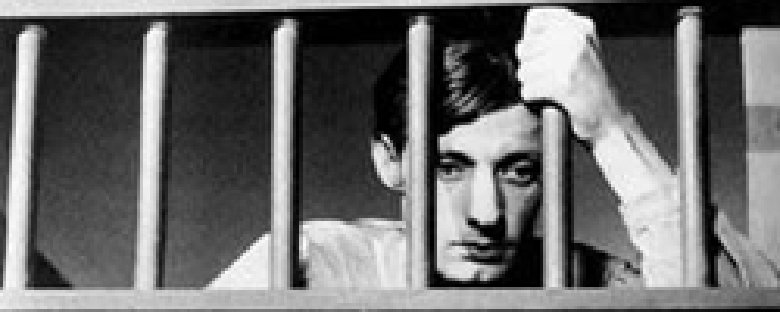Reviews
Un condamné à mort s’est échappé, ou, Le vent souffle où il veut
Robert Bresson
France, 1956
Credits
Review by Matt Bailey
Posted on 11 July 2004
Source New Yorker Video DVD
Related articles
Features: Directors: Robert Bresson
It takes a hell of a film to maintain a high level of suspense even when it gives away the ending in its very title. Robert Bresson’s A Man Escaped is one such film. It is the true story of General André Devigny, a French Resistance fighter who escaped a Gestapo prison during the German occupation of France. While Bresson has changed, for the purposes of the film, the name of the man who escaped as well as obscured some of the details of the prison itself, Devigny acted as an adviser to Bresson on the film and several scenes were in fact shot in the very cell in which Devigny was held.
Bresson was known for being as historically accurate as possible when making films about actual persons or set in specific time periods: his film about the persecution of Joan of Arc uses as its screenplay the actual transcript of her trial. While A Man Escaped is certainly no exception to this tendency, the film’s factual basis is rather unimportant. Whether or not every event captured on film has a direct historical precedent is not what matters; what matters instead is the idea that every incident in the film is wholly plausible as something that could have happened. To this end, Bresson strips away cinematic devices that enhance the fictional nature of a film such as a musical score (though a segment of Mozart’s joyous Mass in C Minor plays over the end credits). For the score of this film, Bresson orchestrates the sounds of the prison: the footfalls of the guards, their jangling keys, the distant reports of guns engaged in executions, and the careful movements of the prisoner’s preparation for escape. Bresson also eliminates such other devices as internal monologue (though voice-over narration taken directly from Devigny’s memoir of the escape does describe and explain certain events), flashbacks, and character-developing dialogue.
Though the overarching aesthetic tone is one of realism, the film does not in any way aspire to documentary. As he did in his previous film, Diary of a Country Priest, Bresson simply puts into visual form the compelling story that already exists on the page, allowing the actions and events to drive the narrative. Through his spareness of style, Bresson links the actions and events with extreme elegance and only provides as much information, visually and narratively, as the viewer needs to move on to the next scene.
For the Bresson novice, A Man Escaped is the perfect introduction to his work. While it marks the maturation of his unique style, the genre of the film — the prison escape — and the linearity of the plot provide ample common ground for the first-time viewer to be able to see what is so extraordinary about Bresson as a filmmaker. A double feature with another excellent, albeit more straightforward, film of the same genre — Jacques Becker’s 1960 Le Trou — would make for a perfect point of entry into the world of Bresson and for a fruitful stylistic comparison of two very different filmmakers as applied to similar material. In fact, why not make a day of it and toss Jean Renoir’s Grand Illusion in there as well?
We don’t do comments anymore, but you may contact us here or find us on Twitter or Facebook.



